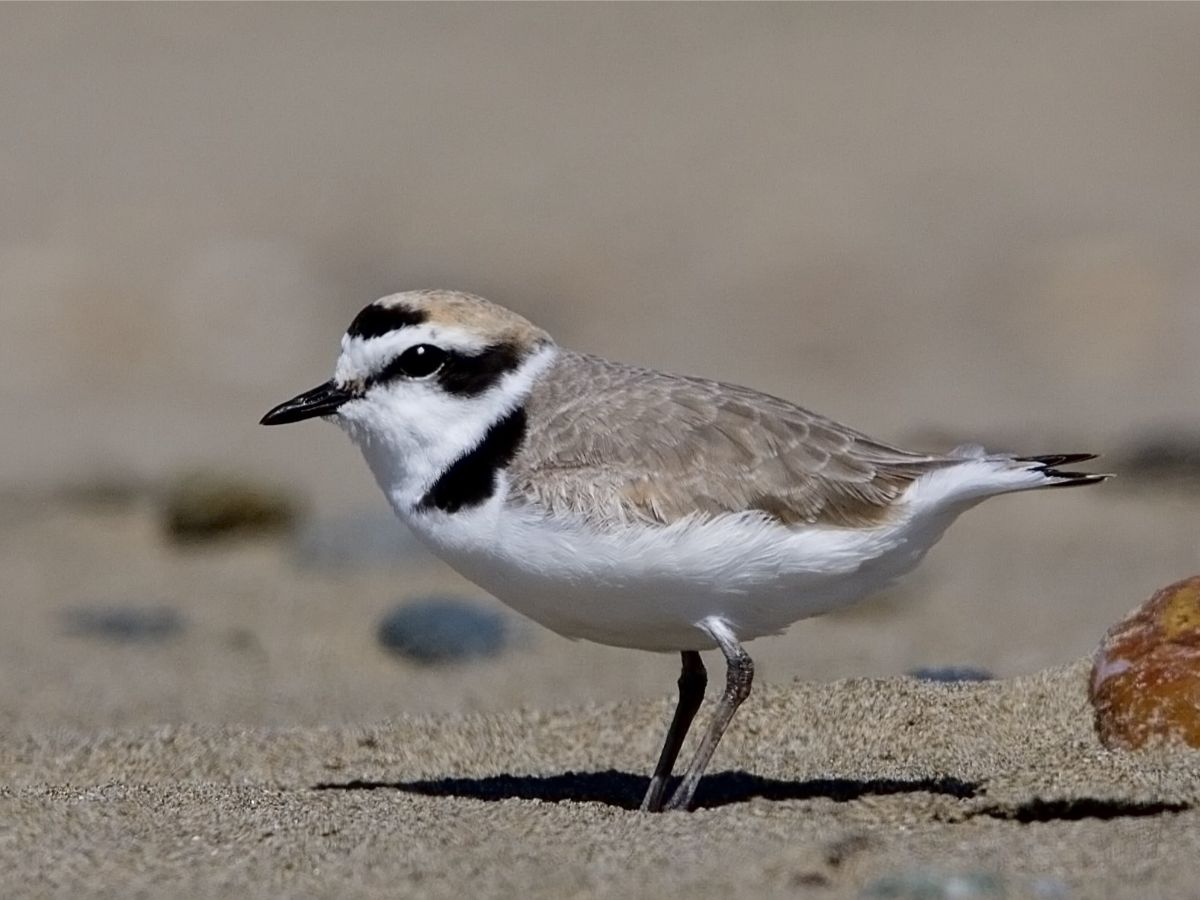Name
Charadriidae
ringed plover
Framing
Phylum: Chordata
Subphylum: Vertebrata
Class: Aves
Order: Charadriiformes
Family: Charadriidae
Habitat
Muddy and sandy riverbanks, marshes or beaches
Feeding
Predator of small invertebrates living in mud and sand.
Distribution
The genus (Charadrius) is cosmopolitan, with the range of the different species being highly variable, although some, such as the Kentish Plover, are present on all continents.
Conservation status
They are a group of birds greatly affected by the channelling of rivers and the intensive tourist use of beaches and coastal marshes, which is why the two nesting species in Spain are included in the catalogues of endangered birds. The Kentish Plover is considered endangered in Andalusia (EN) and Insufficiently Known (K) in Spain. The Little Plover Insufficiently known (K) in Spain and with insufficient data to assess its conservation status in Andalusia (DD).
Additional information
Free. Gregarious. Waders with short, stout legs, neck and bill, giving them a compact appearance. They have a brownish back, white ventral parts, a white collar from throat to nape and a striking contrasting pattern of black and white spots on the head and breast that differs between species. Three species are commonly seen in Spain, the two breeders mentioned above and the Great Plover during the winter and migratory passages. Identification is aided by the colour of the legs and the presence and size of white wing bands in flight.
Additional information
Bibliography
- Amat, J. A. (2005). Does the expression of a male plumage trait in female Kentish plovers (Charadrius alexandrinus) signal individual quality? Journal of Ornithology, 146 (3), 287-290.
- Amat, J. A. & Masero, J. A. (2009). Belly-soaking: a behavioural solution to reduce excess body heat in the Kentish plover Charadrius alexandrinus. Journal of Ethology, 27 (3), 507-510.
- Amat, J. A., Monsa, R. & Masero, J. A. (2012). Dual function of egg-covering in the Kentish plover Charadrius alexandrinus. Behaviour, 149 (8), 881-895.
- Amat, J. A., Visser, G. H., Pérez-Hurtado, A. & Arroyo, G. M. (2000). Brood desertion by female shorebirds: a test of the differential parental capacity hypothesis on Kentish Plovers. Proceedings of the Royal Society of London B, 267, 2171-2176.
- Barbosa, A. (Coord.) (1997). Las aves limícolas en España. Colección Técnica, Organismo Autónomo de Parques Nacionales, Madrid.
- BirdLife International (2011). Charadrius alexandrinus. En: IUCN Red List of Threatened Species. Version 2011.2.
- Castro, M. (2001). Ecología de la alimentación en el Chorlitejo Patinegro Charadrius alexandrinus: ¿existe plasticidad comportamental y fisiológica asociada al sexo? Tesis Doctoral. Universidad de Cádiz.
- Figuerola, J. & Amat, J. A. (2002). Factores asociados a los cambios en la supervivencia del Chorlitejo Patinegro. XVI Jornadas Ornitológicas, Sociedad Española de Ornitología, Salamanca.
- Gómez-Serrano, M. A.& López-López, P. (2014). Nest Site Selection by Kentish Plover Suggests a Trade-Off between Nest-Crypsis and Predator Detection Strategies. Plos One, 9 (9): e107121.
- Martí, R. & Del Moral, J.C. (Eds.) (2003). Atlas de las Aves Reproductoras de España. Dirección General de la Conservación de la Naturaleza-Sociedad Española de Ornitología, Madrid.


